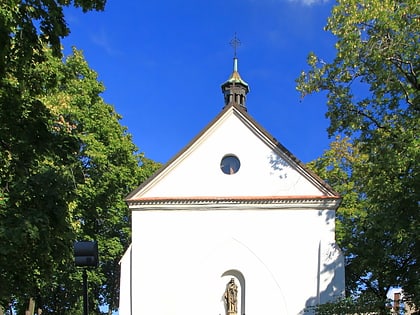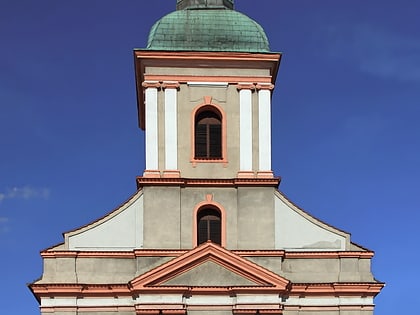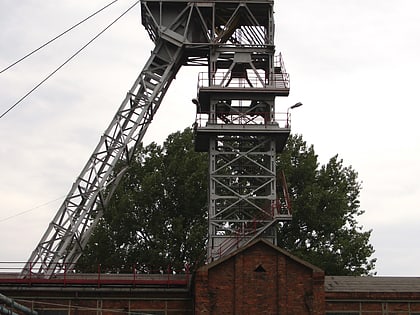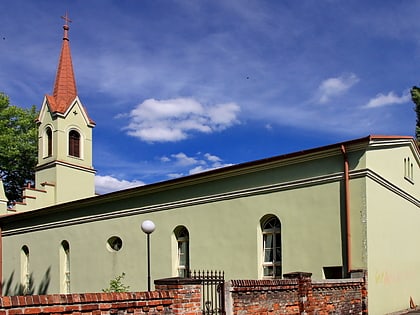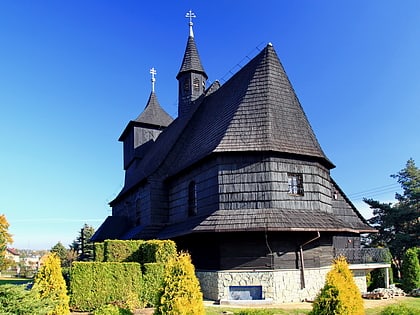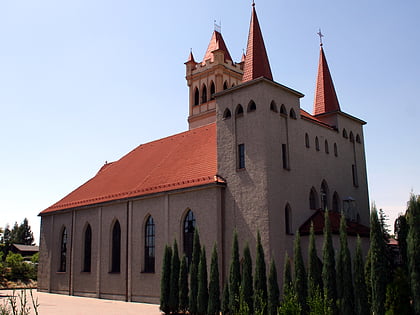Kościół Akademicki pod wezwaniem Wniebowzięcia NMP
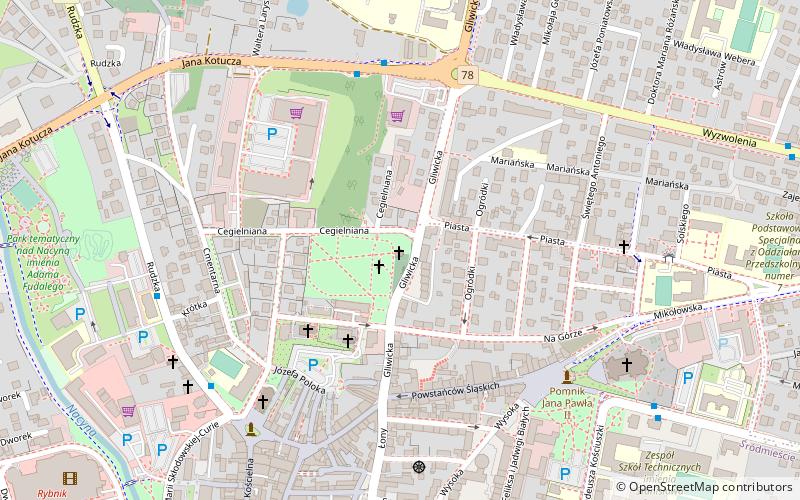
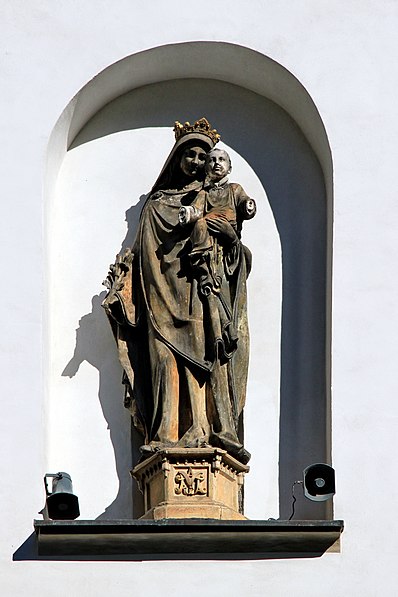
Facts and practical information
Wniebowzięcia Najświętszej Maryi Panny Academic Church in Rybnik is a Roman Catholic academic church in Rybnik. It belongs to Rybnik deanery of Katowice Archdiocese. It is located in Gliwicka Street. It is the smallest and at the same time the oldest church in Rybnik. Throughout the year holy masses are celebrated here on Sundays at 8 p.m. additionally - from October to June at 11 a.m.
This church is a preserved Gothic presbytery of the former parish church. The building was erected in the middle of the 15th century on the site of an earlier wooden temple, probably founded by Mieszko I of Plątonogi in the 12th century. In 1797 the nave and the tower were destroyed, only the presbytery survived. Part of the bricks from the demolished nave was used to build a new parish church - the Church of Our Lady of Sorrows. Part of the demolished nave was used to build a new parish church - the Church of Our Lady of Sorrows. Until 1975 it was a cemetery chapel, surrounded by the oldest necropolis in Rybnik, liquidated in the mid-seventies of the last century.
It is an oriented church, built of brick, inside there are remains of a Gothic ribbed vault. The interior furnishings are contemporary. Inside on the floor there is a stone slab covering the tomb, where the remains of the members of the Hungarian family from Pilchowice are buried. St. John Sarkander preached in this church during his stay in Rybnik in 1619. The park where the church is located and the lapidarium adjoining it from the south were named after him.
In July 2012, the renovation of the church began. The old red brick walls and the floor were restored. Before sandblasting, all bricks were strengthened with special preparations. After sandblasting, cement joints were removed and replaced with lime ones, referring to the 15th century way of building. Finally, the walls were impregnated to prevent them from absorbing deadly moisture. As restoration of the church was connected with installation of floor heating, it was necessary to remove the concrete elevation on which the altar stood. It turned out that years ago, probably in order to save the material, original, baroque sandstone altar steps were drowned in the concrete. Now, after their removal from the concrete and cleaning, they form the front of the newly made elevation, on which the altar stands; in some of them one can still see the remains of lead attachments, probably the former balusters. The old floor was removed. It consisted of the original floor slabs, but also of concrete rubble and quite modern paving slabs. The new floor was made of modern sandstone tiles, which imitate the old floor. Tiles from the original floor of the old church were laid around the slab closing the entrance to the crypt in the back of the church. During the work, the entrance to the crypt under the church, which had been concreted over many years before, was uncovered.
8 GliwickaSilesian
Kościół Akademicki pod wezwaniem Wniebowzięcia NMP – popular in the area (distance from the attraction)
Nearby attractions include: Kościół pod wezwaniem Matki Boskiej Bolesnej, Zabytkowa Kopalnia Ignacy, Kościół Parafii Ewangelicko‐Augsburskiej, Kościół św. Katarzyny i Matki Bożej Różańcowej.
Frequently Asked Questions (FAQ)
When is Kościół Akademicki pod wezwaniem Wniebowzięcia NMP open?
- Monday closed
- Tuesday closed
- Wednesday closed
- Thursday closed
- Friday closed
- Saturday closed
- Sunday 11 am - 12 pm & 8 pm - 9 pm
